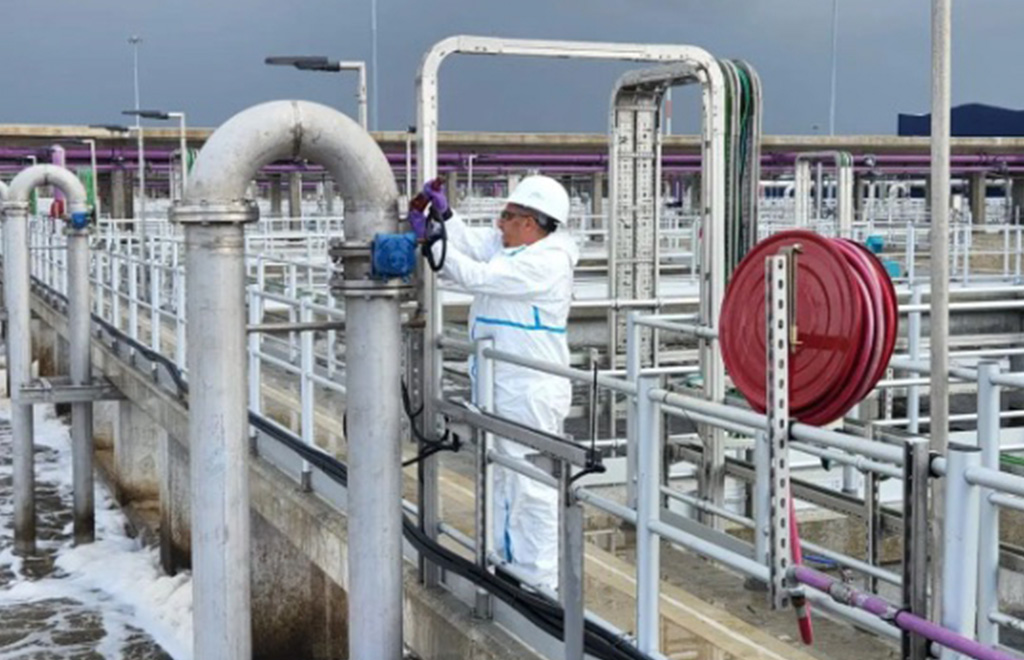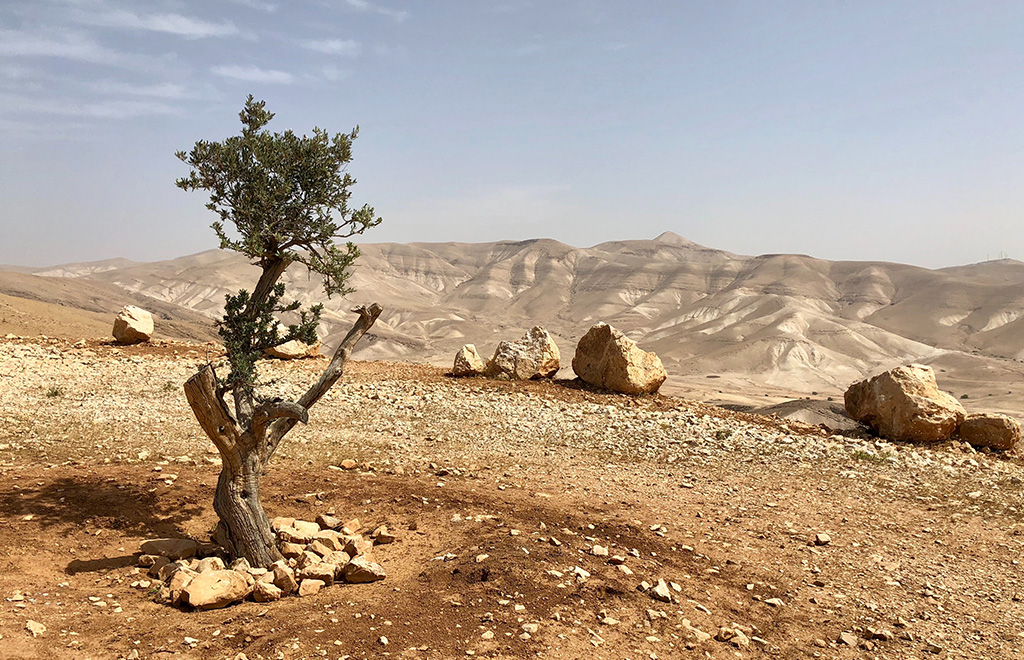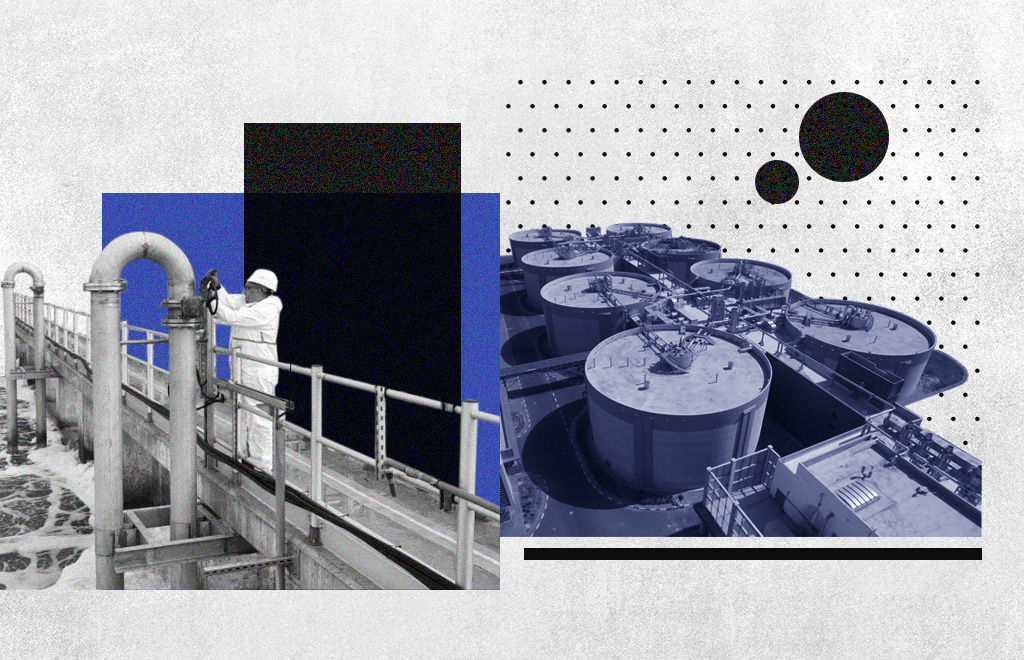One of the biggest challenges humanity will face in the next 50 years is the provision of drinking water. According to an article issued by the United Nations Educational, Scientific and Cultural Organization (UNESCO), despite the progress made in this matter, one in three people do not have access to drinking water, two in five do not have basic facilities to wash their hands with soap and water, and more than 673 million people defecate in the open air. The goal, according to UNESCO, is “water security”: the existence of an acceptable level of water to satisfy different needs. It is not just about having enough water, but about ensuring that it is adequate, dependable and of quality for populations and social or economic activities. This should be made in a sustainable way by mitigating water risks (floods, droughts, and pollution), and dealing with potential conflicts over the territoriality of water.
Israel is a nation that, in addition to having resolved the reality of surviving on 60% desert and the rest semiarid territory, today exports water to neighboring countries, and is a world reference on the subject. Their use of desalination was already known, but they also managed to systematize an effluent water recycling system that guarantees their supply.
‘Solutions arise out of necessity. We started reusing effluent water 40 years ago because there were no other resources. I think Israel was blessed with a lack of water resources. We had to think long and hard and use the few resources we had.’ The speaker is Diego Berger (58 years old), an engineer from the University of Buenos Aires, with a Post Doctorate in water management. He has been living in Israel for 34 years, where he has had a long history at Mekorot, the country's state water company. Today, he is the coordinator of International Projects at this company which during the last few months began working on long-term plans with the governments of five Argentine provinces: Mendoza, San Juan, Río Negro, Catamarca, and La Rioja.

Mekorot, the Israeli water company, has existed since 1937. It became state-owned eleven years later with the creation of the State of Israel. (Image: courtesy of @mekorot.israel.water and assembled by Marisol Echarri)
Water in the desert
In his world bestseller “Water: Israel’s solution to a vital issue all over the world (2017)”, the American lawyer, activist and entrepreneur Seth M. Siegel tells us how Israel managed to lead the world in water technology. He explained that the Nazi extermination moved the Jewish people to seek excellence in three key areas for Israel’s population: security, immigration, and water treatment. Through the culture of prevention, pricing, and innovation, today the country stands out for having solved the water shortage.
Israel had two important laws to obtain water. On one hand, the Water Measurement Act (1955) managed to determine how water is used and promotes its rational use. On the other hand, the Water Act (1959) placed it as a public domain resource.
The water management policy is one of the fundamental bases of Israel, which carries out the water supply, desalination, and reuse. The Israeli water company Mekorot has been working this way since it was founded in 1937, eleven years before Israel declared its independence. In 1948, it became a state company. Mekorot manages seven hundred million dollars a year for water projects, and from the very beginning, has aimed at efficiency in the use of water through the reuse of effluent water (or purification of wastewater) and desalination (using the reverse osmosis technique). It also manages the aqueduct that carries water from the north to the center and south of the country.
The effects of climate change (more years of floods and more years of droughts, more pronounced and more frequent extreme events) result in risks to water supply. ‘There are two types of resources that are quite independent of this: one is desalination water, and the other is treated effluent water. So, in Israel, where the largest amount of water comes from these two sources, we are quite independent of these fluctuations,’ Berger says.
Pillars for water management
Water management in Israel is based on four central axes: the Water Management Act (1955), which states that all water consumed must be measured. Next, the Water Act (1959), which establishes that all forms of water resources belong to the people and must be administered by the State. Also, centralized management (established in 2005, when large-scale desalination began), which defines the Water Authority (a self-governed entity) as solely responsible for water management. And, finally, the decision – in 2005 – that the water sector should finance itself: it does not depend on the state budget; all its resources come from the water bills paid by users (30% of those water bills is for new projects).
Water does not have a fixed rate: users pay a bimonthly rate only for what they use. Each user has their consumption meter, and the price of water is the same everywhere. It does not matter if it is more expensive to take the water to Jerusalem, where it must be carried eight hundred meters upward, or to Tel Aviv, which is next to the sea. All production costs are recorded and divided by the water produced; so, one part of the country is subsidizing the other part.
‘Our philosophy is that there is no reason to penalize someone for being in a less favorable location, and no reason to give someone a discount for being in a location that is cheaper,’ says Berger. ‘That also applies to agriculture. For example, in the north of Israel there is more rain and therefore, more water. Farmers will pay the same as the water being taken to the desert.’
Since all customers have their consumption meter, if someone has any difficulty paying for water, there is a basic amount of that can be purchased for a very low rate or even obtained for free. If people use more than that basic amount, they will be charged. This is based on the citizens’ commitment to take care of the resource. Precisely, awareness of water use is essential to find solutions. ‘In Israel there are reminder campaigns. But if a boy, from an early age, has a shower and turns off the faucet to soap himself, and brushes his teeth and turns off the faucet, it is not because the price of the water is high. Children don’t know what is cheap or expensive. However, they know that it is a finite asset and that it must be taken care of. We educate children at school, and we remind adults about it in the water bill,’ adds Berger.

‘I think Israel was blessed with a lack of water resources. We had to think long and hard and use the few resources we had,’ says Diego Berger, an Argentine engineer who lives in Israel and is the coordinator of Mekorot International Project Area. (Image: courtesy of Diego Berger and assembled by Marisol Echarri)
Water reuse and desalination
‘There are places in the world (such as regions in Latin America or Africa) where 80 or 90% of the water goes to agriculture; therefore, its reuse is very marginal. In the 1960s in Israel, 80% of the water was for agriculture; today, that figure dropped to just over 50%. Now, 85% of the effluents are reused, which allows half of agricultural irrigation to come from used water,’ says Berger. Effluent water is water treated for reuse after its properties are altered by domestic or industrial use. That is, it is sewage treated for reuse, a technique that few countries in the world use.
For example, the Shafdan plant (model plant according to the United Nations), treats 400,000 m3 a day of municipal effluent water from the Tel Aviv area. It seeks to neutralize pollution, health risks and untreated discharges. In turn, it supplies safe, treated, pipeline-transported effluent to irrigate a substantial part of the country’s agriculture in the desert.
With sixty-seven facilities, Israel has allocated more than USD70 million to centralized water recovery since 2000. This has meant 160 million m3 of water per year.
Its network of pipes runs almost across the entire country; it transports and distributes surplus water when needed. As of 2010, regulations limiting salinity and the presence of toxic metals were also included. This is crucial to alleviate the effects of droughts and climate change.
On the other hand, desalination is moving salt from seawater or saltwater to make it drinkable or useful for other purposes. Israel does this through a process called reverse osmosis. However, desalinated water is expensive in terms of power consumption, to which among other things, capital investment, operation and maintenance are added. In Israel, desalinated water represents almost 35% of the total water consumption supply.
Berger makes a clarification: ‘We achieved this goal after having done a lot to take care of the resource: reduce losses, use all the water you have, and only then use desalination water,’ he explains. ‘Also, for ethical reasons, you cannot start by using more expensive water before doing everything else. First, you must manage the demand; that citizens and farmers use less water.’ Israel began large-scale desalination almost 20 years ago to increase consumption in the entire Mediterranean Sea region.
Argentina and Latin America
In 2017, three weeks after being published in the United States, Siegel presented in Argentina his book “Water: Israel’s solution to a vital issue all over the world’, where he focused on the importance of citizens demands for specific public health policies. He considered that the Israeli model has many points that may be replicated, but the challenge is to change the culture of water consumption and act decisively, without waiting for extreme situations to act.
Berger explains it this way: ‘There is a right everywhere to good quality water always available. The point is that this is a contract. The country must supply the water, but consumers must fulfill an obligation: they must not waste it; they must take care of it. This topic is almost absent in Latin America. Everyone must have water, but waste is not punished. It is a cultural and educational issue. In many cases, there are not even consumption meters. In agriculture, it is also an absent topic.
‘People don’t give water the value it deserves.” In Argentina, the actual national average consumption is 180 liters/inhabitant/day, the triple of what the WHO recommends.
For Berger, people must understand that they must use only the necessary amount of water. ‘It may seem complicated, because there are deep-rooted customs, but it is not impossible. We do not want to carry out works of any kind in the country, but rather help with planning and mindset change, which I believe is the best thing that can be done here,’ he says in relation to the advice that Mekorot is currently giving to five Argentine provinces.
Agriculture is also a big challenge. Today in Israel, on average and proportionally, a quarter of the water is used for this activity, compared to Latin America. ‘Inefficiency must be reduced,’ explains Berger. ‘Historically, canals were made because it was cheap, but they had big losses. They don’t exist in Israel; it is all piped and each farmer has a consumption meter. It is another paradigm. Of course, it is more expensive to make pipes. The infrastructure cannot be modified radically or immediately, but it is possible to face a change.’
As desalination is included in the price, farmers will have to take advantage even of the last drop. We must take care of water to increase productivity. In Israel, between 1968 and 2008, with approximately the same amount of water and irrigated area, agricultural production grew four times. ‘This explains why farmers had to be more efficient. That’s the basis of everything,’ says Berger. ‘It makes no sense to continue talking only about innovation and technologies without dealing with the change in mentality.’

According to the UN, although 60% of Israel’s surface remains desert land, it is the only country where the desert is going backward. (Image: Unsplash, assembled by Marisol Echarri)
Meanwhile, climate change brings urgent challenges, which – as in the rest of the world – add new paradigms to the region. Nations that usually enjoy a good amount of rain today face long droughts and the counterpart, strong floods. In Argentina, despite the extensive humid pampas, almost 70% of the national territory has a water deficit. In this context, with works financed by the Federal Investment Council (based on provincial contributions), five provinces are making master plans with Mekorot. These works started in Mendoza and San Juan in November 2022, and recently in Río Negro, Catamarca, and La Rioja. On the other hand, Formosa and Santa Cruz agreed on a consultancy, and Santiago del Estero and Santa Fe made an agreement for the creation of a water masterplan in the medium term. ‘We sit down with each province and see how we can improve the operation, the centralization of existing projects. Masterplans are about long-term planning,’ explains Berger. For the Argentine engineer, in a context of floods and droughts, planning is the key to reducing risks. For such a purpose ‘we must review the infrastructure to accumulate the amount of surplus water in good years to be used in bad years. Therefore, this must be managed in such a way that these difficulties are not too severe. Sometimes a year with a lot of water supply makes farmers want more water, even if they do not need it. ‘We need to know the amount of water that can be used sustainably in the future.’ He adds that ‘this must be a political decision. Our 30-year master planning projects are for that.
We define those values and become independent of the amount of water. ‘What is happening now with droughts is something that cannot happen.’ Mekorot also has highly developed long-term (30 years) master plans in locations in India and Azerbaijan. On the other hand, they signed consulting agreements with Uruguay, Mexico, and Chile.
Although 60% of Israel’s surface remains desert land, it is the only country where – according to the UN – the desert is going backward. Their water management worked for production and for its inhabitants.
Berger closes: ‘In countries where we are all supposedly equal for the Constitution, there cannot be people without access to safe water and sewage. In Latin American countries that are two hundred years old, it should be unnecessary for the UN to come and say that water is a right that must be ensured. This is not a problem of budget, but of inequality. If we are all equal, all of us must have the same opportunities, including the right to water and sewage, which is a basic one.’
This article is part of the Solutions for Latin America platform, an alliance between RED/ACCIÓN and Río Negro.




